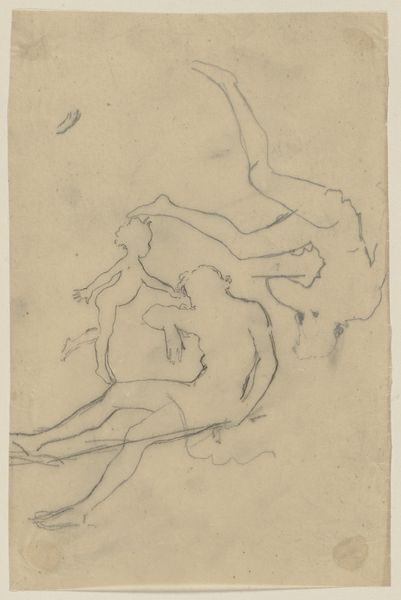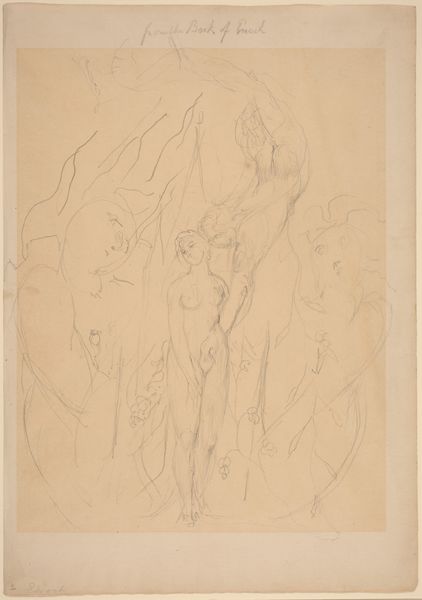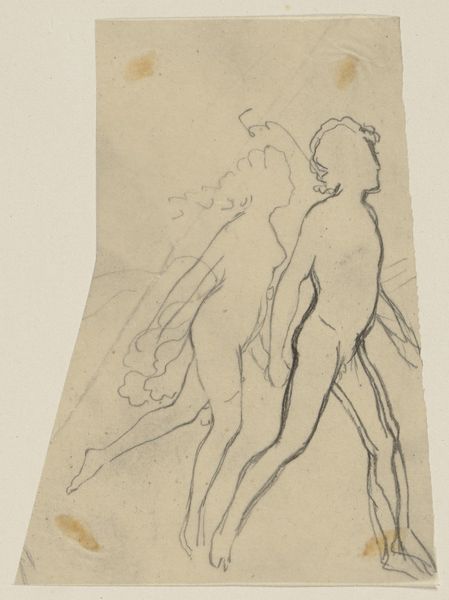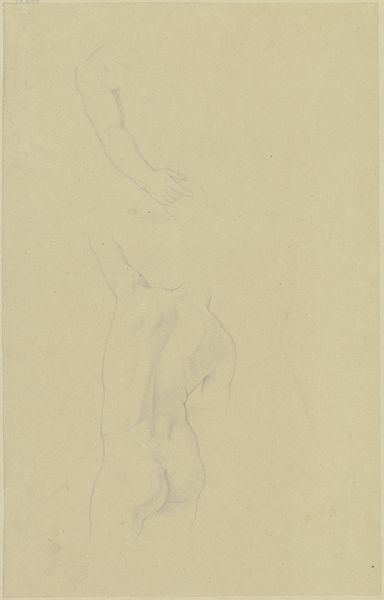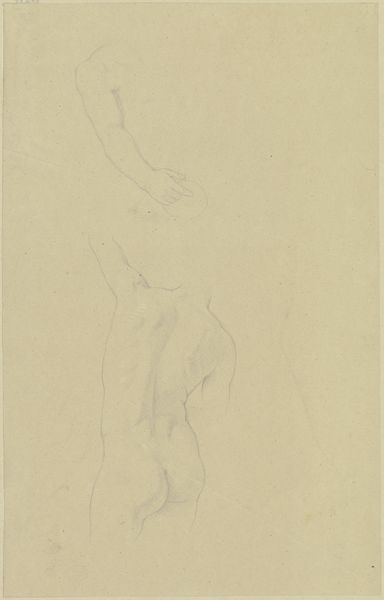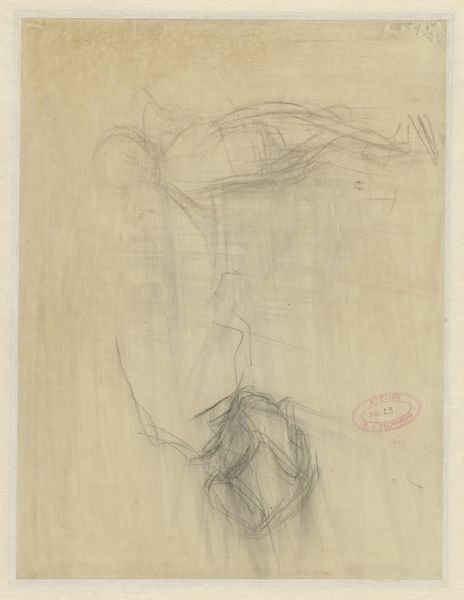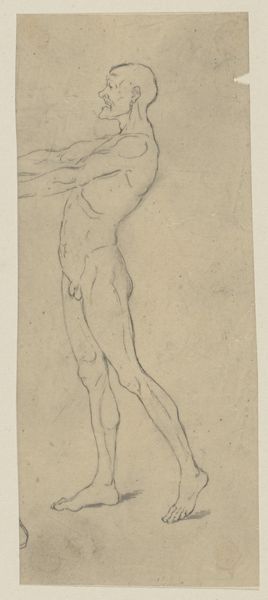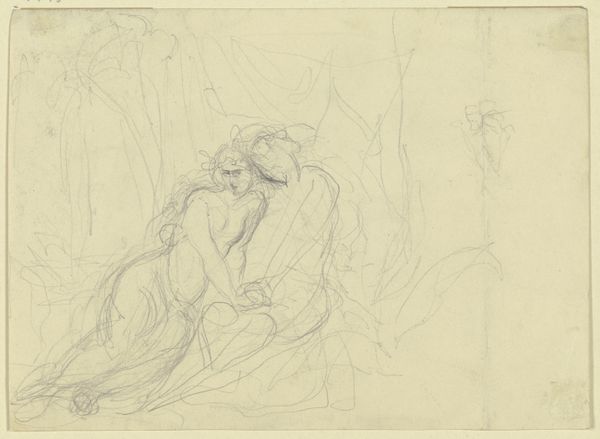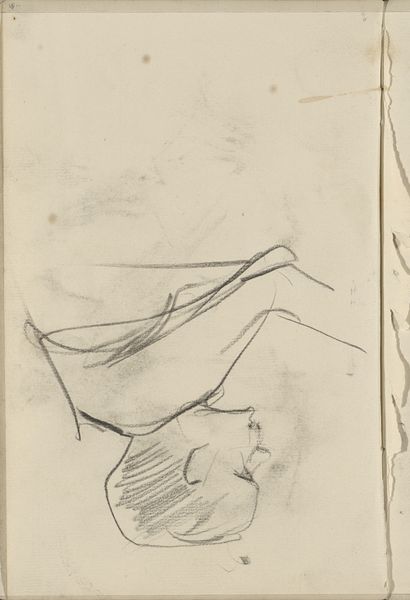
drawing, pencil
#
portrait
#
drawing
#
charcoal drawing
#
figuration
#
pencil
#
realism
Copyright: Public Domain
Art Historian: Here we have a drawing titled "Eine Elfe, ein Tablett tragend," or "An Elf Carrying a Tray," created around 1867-1868 by Paul Konewka. It’s currently housed at the Städel Museum. Curator: There's a delicate sadness about this piece, a ghostly ethereality to the figure. The sparse lines on the discolored paper really lend to the sense of longing. It almost looks like a preliminary sketch of some forgotten figure from folklore, or an unfinished idea of one. Art Historian: Konewka was a fascinating figure in his own right. He wasn't traditionally trained; he actually worked primarily as a silhouette artist. These silhouettes, often illustrations for books, were hugely popular, offering an accessible art form for the burgeoning middle class in Germany at the time. This drawing provides an intimate glimpse into Konewka's broader practice. Curator: Yes, and considering Konewka's position in a rapidly industrializing Germany, this image takes on an added significance. It almost seems to be wistfully contemplating nature against encroaching urbanization. Are these mythological figures stand-ins for lost freedoms? Is this why we, still to this day, look at the art with the figures like elves? Art Historian: Precisely. We must remember that Romanticism flourished throughout Europe during this period. Industrial society's stark rationalism created a hunger for fantasy, mythology, and spirituality, as antidotes to lived experience. "Eine Elfe, ein Tablett tragend" plays directly into that sensibility. This image also resonates with Pre-Raphaelite movement happening in England around the same time; an escape into a idealized and more pure past, or imaginary world. Curator: You know, considering this piece through a contemporary lens of gender and representation…There's something compellingly androgynous about the elf. This androgyny really destabilizes conventional beauty ideals. Art Historian: That's such a sharp point. And thinking about audience reception – I can see how its dreamlike quality was also deeply engaging at the time, especially to a broad audience, including women who were becoming more prominent in the art world as consumers and occasionally creators. It allowed one to conjure and embody dreams within one’s domestic sphere. Curator: Looking at this delicate study, and understanding its socio-historical context truly allows the viewer to ponder about what stories and hidden histories it whispers to the present. I leave feeling melancholy, but oddly, filled with hope. Art Historian: I concur completely. What this Konewka drawing encapsulates is an enduring human need: to escape the confines of our everyday realities and search the intangible through myth. Thank you.
Comments
No comments
Be the first to comment and join the conversation on the ultimate creative platform.



